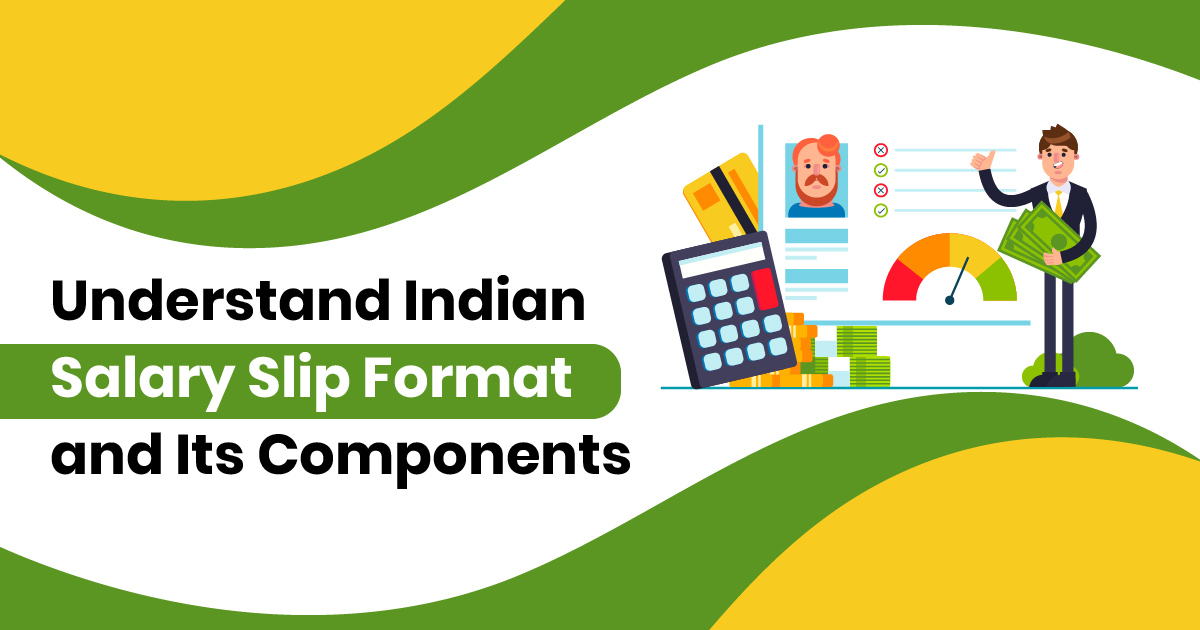What does a basic Indian salary slip format look like?

While commencing the corporate journey it is challenging for newcomers to understand the salary structure and invoices. They often get confused with specific terms like gratuity, bond, etc. It is the time when organizations have made farewell to manual attendance process and they leverage smart ways to manage HR operations through advanced human resource management software. The blog contains complete details into understanding the salary slip formats so no newcomer could ever feel confused.
Overview- Salary Slip
When an employee pays his/ her service to the company in a monetary exchange, he/ she receives an official document that contains the salary details of the specific month. Simply put, a salary slip is generated by a company for its employees, containing the employee’s basic salary, gross and net salary, tax, and more. Every company is bound to generate the payslip (salary slip) to its employees, and it can be done with two ways, through manual payroll processing and cloud based payroll software. Both ways have specific pros and cons which we have covered in our last blog.
There are various types of employees that provide services to companies and based on their tenure, the company generates salary slips to them. For instance, the company is entitled to generate payslips to full-time employees or to those who are on contractual basis. Similarly, they are not entitled to generate payslips to freelancers, as they get a specific contract with the company, and accordingly remuneration detail is given to them.
Factors Included in A Salary Slip
Salary slip is generated considering multiple factors like shift hours completed. The company uses smart attendance management software to monitor employees’ attendance, shift hours, check-ins/outs, etc. Here’s how a basic salary structure looks like:
| Basic Indian Salary Slip Structure |
| Section 1: | Employee Details |
| Employee Name | ABCDEFG |
| Employee ID | 98765456 |
| Department | XYZ |
| Bank Account Number | ***************4112 |
| PAN Number | ER5******093 |
| UAN Number | ************7894 |
| Date of Joining | 1 Jan 2024 |
| Days Worked | 20 |
| Section 2: | Earnings |
| Basic Pay | [Amount] |
| Dearness Allowance (DA) | [Amount] |
| House Rent Allowance (HRA) | [Amount] |
| Bonus | [Amount] |
| Medical Allowance | [Amount] |
| Total Earnings | [Total Amount] |
| Section 3: | Deductions |
| Employee Provident Fund (EPF) | [Amount] |
| Tax Deducted at Source (TDS) | [Amount] |
| Professional Tax | [Amount] |
| Total Deductions | [Total Amount] |
| Section 4: | Net Pay |
| Net Salary | [Net Amount] |
Components That Every Employee Must Know About
Here are the basic salary slip components that employees should know about:
Employee Details:
When the company generates the salary slip it includes every detail related to employees’ payroll. The slip contains basic employee details, as mentioned in the table above, such as employee name, employee ID, department, bank account number, PAN number, UAN number, date of joining, and days worked. The company no longer requires traditional ways of generating payslips, and with the farewell to manual attendance process, they can easily automate payslip generation with advanced payroll software.
Remuneration Details:
The payslip includes basic pay that an employee gets in a month, including the overall payslip details. The basic and basic pay means the approximately one-fourth of the employee’s total salary, and tax gets deducted on that amount. The basic pay is taxable and further components are added/ deducted to it, making the final or net monthly salary salary.
Dearness Allowance
It is another allowance which is majorly the thirty percent of the basic pay and given to employees to offset the inflation’s impact. Due to the rising inflation rate, it is given to employees to beat the inflation rate and make a better lifestyle.
Additional Income
Salary slip also contains the bonus part that major companies provide to its companies. It is the internal decision of the company to provide the bonus percentage. It also varies from company to company, some companies provide monthly, quarterly, or yearly bonuses while some do not pay any bonus at all. It completely depends on the company if it wants to pay bonuses to its employees.
Benefits
Through cloud based payroll software, companies easily process the HRAs for employees in their monthly pay slips. Moreover, HRAs are given to employees to pay for their house rent or for those who’re living outside their hometown by renting out apartments. It is the combined portion of basic pay and dearness allowance.
Medical assistance is an additional benefit that companies provide to their employees. Employees get medical insurance from their company up to an extent which covers their medical bills and additionally receives tax exemption.
Deduction:
The Employee Provident Fund (EPF) is a mandatory deduction made by companies, where 12% of the employee’s basic salary is withheld and matched by the employer’s contribution. HRMS and attendance management software provide comprehensive details of these deductions, enabling employees to track them easily.
Another significant deduction is Tax Deducted at Source (TDS), which varies based on applicable tax slabs. Employees are required to report the deducted tax when filing their Income Tax Return (ITR). However, they can reduce their taxable amount by investing in schemes such as ELSS, PPF, NPS, and others.
Ending Note
It is the time when companies have shifted from manual payroll processing to advanced payroll management software to simplify payroll processing. Many have said farewell to the manual attendance process by adopting smart attendance management solutions, like Kasturi HR. If you’re looking to simplifying your payroll process, get the exclusive 90 days free trial of Kasturi HR.
